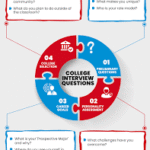Higher education is often seen as the key to a better future. But in the United States, the rising cost of college has sparked a growing debate: Should college be free?
Supporters say free college would open doors for millions, while critics worry about the financial and social consequences. So, what’s the real story behind this complex issue?
Let’s take a closer look at both sides of the debate.
Why Do People Support Free College?
1. Equal Access to Education

Many students, especially those from low-income families, simply can’t afford college. Free tuition would remove that barrier and give everyone a fair shot, regardless of background.
2. Less Student Debt
Americans owe over $1.7 trillion in student loans. Free college could prevent future generations from falling into the same debt trap, reducing financial stress and improving long-term economic freedom.
3. A Smarter, Stronger Workforce
Making college accessible to all could result in a more educated and skilled workforce. This benefits the economy, boosts innovation, and helps the U.S. stay competitive globally.
4. Increased Graduation Rates
When tuition is free, students can focus more on studying and less on juggling jobs. This might lead to higher graduation rates, better academic performance, and improved mental well-being.
The Arguments Against Free College
1. Who Will Pay for It?
The biggest question is cost. Free college programs would need funding from taxpayers. Critics argue that this puts a heavy financial burden on the government — and ultimately on citizens.
2. Not All Students Need Free Tuition
Some believe financial aid should be targeted, not universal. Wealthier families can afford college, so offering free tuition to everyone may waste public resources that could go to those who truly need help.
3. It Might Devalue a College Degree
If everyone goes to college, will a degree become less special? Some fear that free college could lower educational standards or reduce the value of a diploma in the job market.
4. Overcrowded Colleges and Strained Resources
With no financial barrier, more students may enroll—but can colleges handle it? Overcrowding, understaffing, and limited resources could affect the quality of education.
What Other Countries Are Doing
Several countries already offer tuition-free college, including:
- Germany
- Norway
- Finland
- Sweden
These nations view higher education as a public good, like healthcare. While they still have challenges, they show that free college is possible with the right policies and priorities.
What’s Happening in the U.S.?
In the U.S., some states and cities have introduced “free college” programs, usually for community colleges. Examples include:
- Tennessee Promise
- New York’s Excelsior Scholarship
- California Promise Grant
These programs often come with conditions, such as GPA requirements, income limits, or staying in-state after graduation. Still, they represent steps toward more affordable higher education.
Middle Ground: Is “Free for All” the Only Option?
Some experts suggest compromise solutions, such as:
- Making community college free, while keeping universities low-cost
- Expanding need-based scholarships and income-driven repayment plans
- Offering free college for specific fields (like teaching, nursing, or technology)
These ideas aim to balance cost, access, and quality, without overburdening taxpayers.
Final Thoughts
So, should college be free? There’s no easy answer.
Free college could level the playing field, reduce debt, and strengthen the economy. But it also raises questions about cost, fairness, and feasibility. What’s clear is that something needs to change. College should be accessible and affordable not a financial burden that lasts a lifetime.
As the debate continues, students, educators, and policymakers must work together to find a solution that supports opportunity without sacrificing sustainability.










